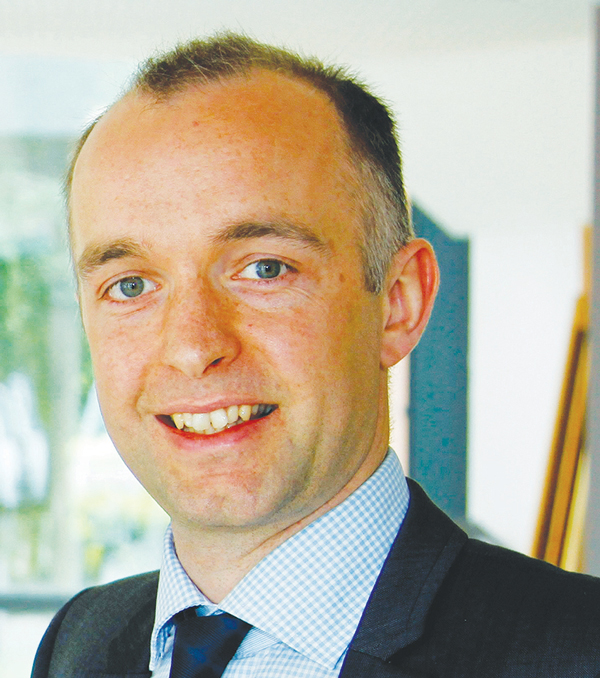Financial cracks are emerging in the government’s flagship 16-19 free schools as heads face stalling recruitment and “chronic” underfunding.
Analysis by Schools Week reveals that half of the 18 sixth-form free schools have fewer than 200 pupils, which the government says is the minimum roll for a viable school. Most have been open since 2014.
Another 28 are due to open in the next few years as part of the continued push to meet the government’s target of 500 free schools by 2020.
The figures coincide with a new campaign, Support our Sixth-formers (SOS), launched to urge ministers to introduce a £200 funding boost per student or face sixth forms scaling back on vital provision.
School leaders say a “sustained period of underinvestment” has led to 21 per cent less funding for sixth-formers than younger pupils.
James Kewin (pictured right), deputy chief executive of the Sixth Form Colleges Association, said the “chronic” underfunding made it “very difficult for small sixth-form providers to survive, let alone, thrive”.
But there are heightened concerns over the viability of 16-19 free schools as their rolls tend to be smaller than standalone sixth-form colleges.
Nor can they rely on subsidies available for school sixth forms, which can be supported from the school’s “more generous” 11-16 funding.
Despite the subsidies, government guidance says that new school sixth forms still need at least 200 students to be financially viable.

With half of the 16-19 free schools not hitting this number, Kewin said it was “difficult to see” how many of these institutions would be financially viable in the medium term unless they had some sort of “mother-ship, such as an existing sixth-form college or multi-academy trust”.
Some are already in trouble. As reported by Schools Week, low numbers have forced Bolton Wanderers Free School to close later this year. It opened in 2014.
Connell Sixth Form College in Manchester also ran into financial difficulties. Bright Futures, the trust that runs the college, borrowed from the Education Funding Agency after Connell did not hit student number targets.
The trust was also issued with a financial notice to improve in February last year.
Ali Jaffer, interim head of Chapeltown Academy, a 16-19 free school in Yorkshire, told Schools Week its planned pupil number of 300 may have to rise in light of increased costs.
At present it is below target with fewer than 200 students. Jaffer said it was “ambitious to provide a truly fantastic experience” but given the pressures and challenges of A-levels, this could only be offered if funding increased.
Latest accounts for King’s College London Maths School, much vaunted by the government as an example of a successful 16-19 free school, shows it has to make a “concerted effort” to fundraise to boost its cash reserves after governors raised concerns.
This will ensure that should core funding fall, the school could still “attract and reward high quality staff in a competitive field”.
Angela Rayner, Labour’s shadow education secretary, said continuing to “plough money” into undersubscribed schools at a time when school budgets were “reaching crisis point”, was a “deeply irresponsible and wasteful approach”.
Kewin said that he was now working with more 16-19 free schools to forge links with other sixth forms to form a network and share good practice around sustainability.
The Department for Education has previously said it has protected the base rate of funding for all post-16 students until 2020.








A closer look at the allocation data also shows that many Free schools with sixth forms do not “earn” the expected funding per learner (£3,850 after disadvnatage and area cost stripped out)
2016/17 allocation
Institution Name Total Students Adjusted Rate per learner
Perry Beeches II 90 £3,136
Holy Trinity 39 £3,200
Chetwynde School 42 £3,216
The Rural Enterprise Academy 25 £3,296
Jane Austen College 80 £3,350
Bolton Wanderers Free School 135 £3,494
Atherton Community School 37 £3,564
Connell Sixth Form College 336 £3,608
Nishkam High School 33 £3,707
The Maltings College 144 £3,736
Sir Isaac Newton Sixth Form Free School 201 £3,755
Bradford Girls’ Grammar School 121 £3,766
Many more are on flat funding of around £4,000 per learner suggesting they are on modelled funding
Herefordshire Robert Owen Academy 38
Bradford Dixons McMillan Academy 63
Darlington Polam Hall School 56
Halton Sandymoor 100
Leeds Elliott Hudson College 810
Bristol City of Bristol Free School 80
East Sussex Gildredge House 136
Trafford NORTH CESTRIAN SCHOOL 15
Wolverhampton The Royal School Wolverhampton 118
Rutland Harington School 106
Sunderland Grindon Hall Christian School 35
Sheffield Chapeltown Academy 198
Devon Exeter Mathematics School 125
Newcastle upon Tyne Discovery School 115
North Somerset North Somerset Enterprise and Technology College 380
If these follow the UTC drop in funding per learner when lagged funding kicks in the whole 16-19 sixth form concept could be a risk
In Rutland, the establishment of a sixth-form free school concentrating on academic subjects triggered the closure of an existing sixth-form which offered a full range of courses. http://www.localschoolsnetwork.org.uk/2017/04/established-sixth-form-closes-18-months-after-sixth-form-free-school-opens